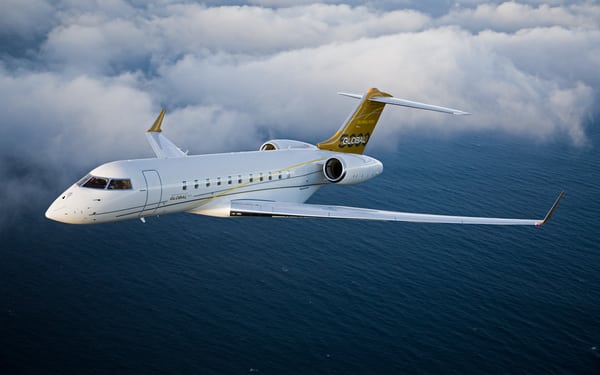[Avionics Today 05-15-2015] Bombardier has announced another scale back in production, this time regarding its Global 5000 and Global 6000 aircraft, with reductions for the business jets beginning next month. The company will slash approximately 1,750 jobs at its plants in Montreal, Toronto and Belfast through 2016 as a result, adding to the pile of nearly 1,000 position cuts that were made when the company announced a “pause” to the Learjet 85 program earlier this year.
 |
| Bombardier Global 5000 Biz Jet. Photo: Bombardier |
Bombardier cites a weak market and current economic conditions as well as “geopolitical issues” in certain market regions, such as Latin America, China and Russia as the reasons for the cut backs.
“We have seen an industry-wide softness in demand recently in certain international markets and are taking steps to adjust our production accordingly,” said Éric Martel, president of Bombardier Business Aircraft, in a statement regarding the release.
However, it’s likely that the scale back is related to more internal reasons the company is seeing from a ramp-up of the program last year.
“[Bombardier] had just ramped up production by almost 50 percent to 80 units a year, but this rate was clearly unsustainable,” Rolland Vincent of the business aviation consulting firm Rolland Vincent Associates, told Avionics Magazine. “Their reported backlog in months of production fell from 44 months (which was clearly too long to wait — it needed to come down) to 17 months over a two-year period. This is now uncomfortably short.”
While Vincent believes the ramp-up helped bring much-needed cash flow into the business to fund “delayed and troubled” programs, such as the CSeries and Learjet 85, he sees the cut backs resetting production close to where it was before the uptick, to something more like 50 to 55 aircraft a year. Bombardier has not yet revealed the true numbers for the scale back.
“This up-and-down, whipsaw effect is very difficult for any organization and its supply chain to manage. The loss of higher-margin Global [aircraft] production will be hard to replace from a financial perspective as the company tries to improve its [Earnings Before Interest and Tax] EBIT margins, which are well below its peer group,” said Vincent.
The overall business jet market is seeing an increase, according to Jetnet reports, which indicate a 4.4 percent Compound Annual Growth Rate (CAGR) over the last 10 years. The global business aviation fleet has now grown to nearly 20,000 aircraft, but with U.S. and Mexican economies seeing most of this uptick — carrying 68 percent of the world fleet — Vincent agrees that certain markets are seeing a “softness,” as Bombardier has indicated.
“Orders from Russia and China dropped sharply in 2014 for various reasons — economic sanctions linked to the invasion of Crimea, austerity programs in Beijing, etc. Brazil and other developing markets are also feeling the pressure from lower commodity prices,” said Vincent. “The Euro’s depreciation against the U.S. dollar has also taken some of the wind out of demand from Euro-based customers.”
The scale back and production halts don’t seem to be booming indicators for Bombardier, but the biz jet manufacturer is still showing impressive numbers, shipping 204 aircraft in 2014 and forecasting 210 deliveries this year. Their biz jet deliveries have also seen an increase in line with the global CAGR at 4.7 percent and, with the overall business aviation market growing, it’s not unlikely the company will get back on track, especially as it moves toward releasing new models.
“This decision is due to the rapid burn down of their Global backlog; 80-per-year production rates were not sustainable, especially given some softness now in developing markets (Russia was taking a lot of Globals, for instance),” said Vincent. “Further, by launching the Global 7000/8000, some customers and prospects will naturally wait for these newer models.”